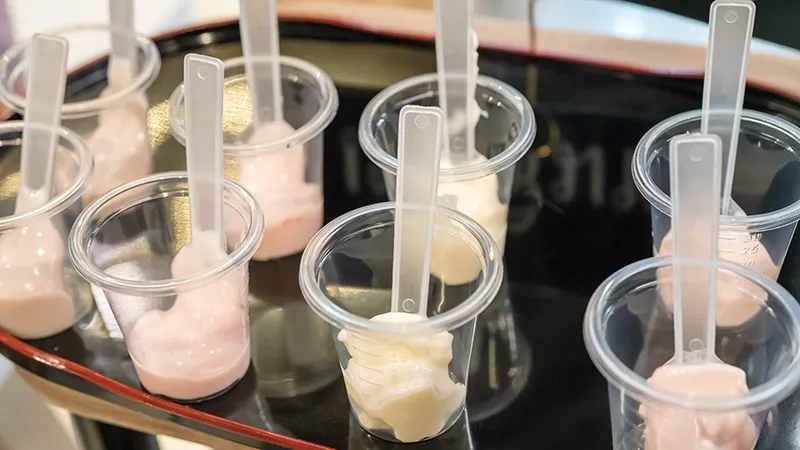How Central Location Testing Reveals What Survey Data Cannot Capture


When you’re developing products, survey responses can tell you what consumers think they want. The challenge is that what people say often differs dramatically from how they actually behave when faced with real products in front of them.
Central location testing bridges this gap by bringing consumers to a controlled environment where they can interact with your products directly, revealing insights that questionnaires simply cannot access.
Surveys ask people to respond to hypothetical scenarios, which means they’re essentially guessing how they’d feel about your product based on a description. This creates a fundamental problem because human imagination rarely matches actual experience, particularly when sensory attributes like taste, texture, or scent come into play.
Someone reading about a “rich, creamy yoghurt with subtle vanilla notes” constructs a mental image based on their own preferences and past experiences, which might bear little resemblance to what you’ve actually created.
Memory introduces another layer of distortion that undermines survey reliability because when you ask consumers to recall their preferences or experiences with similar products, you’re accessing reconstructed memories rather than accurate records.
People genuinely believe they’re giving you truthful information, but what they’re actually reporting is their current perception of past experiences, filtered through time and subsequent encounters with other products.
Social desirability bias creates significant problems in survey research, particularly for food and beverage brands trying to understand genuine preferences.
Respondents gravitate towards answers they perceive as more acceptable or intelligent, especially when discussing topics like health, nutrition, or environmental impact. The gap between what someone tells you they value and what actually drives their purchasing decisions can be enormous, leaving you with data that looks compelling but predicts behaviour poorly.
Your survey might reveal strong interest in products with reduced sugar or increased fibre content, yet those same respondents continue buying the full sugar versions when they’re actually standing in the supermarket aisle. Central location testing cuts through this disconnect because you’re seeing how people respond to actual products rather than idealised versions of themselves.
Placing your product in someone’s hands changes everything about the feedback you receive. Texture becomes real rather than imagined, packaging functionality reveals itself through actual use rather than theoretical assessment, and weight, size, and visual impact register in ways that descriptions and images cannot replicate.
For food and beverage products specifically, the sensory experience differs profoundly from what consumers can predict about their own preferences. Someone might tell you in a survey that they’d enjoy a bold flavour profile, then discover through taste tasting that what seemed appealing in theory feels overwhelming in practice.
We’ve watched this pattern repeat itself across thousands of tests, where the gap between expected preference and actual response reveals critical issues that would have torpedoed a product launch.
Your packaging might photograph beautifully and describe well in research materials, but central location testing shows you whether it actually opens easily, whether portions are intuitive, and whether the materials feel premium or cheap.
These tactile and functional elements influence purchasing decisions substantially, yet they remain essentially invisible to survey methodologies because consumers cannot accurately predict how they’ll respond to physical characteristics they haven’t experienced.

Trained researchers conducting central location testing can observe facial expressions, hesitation patterns, and behavioural cues that participants themselves might not consciously notice. The slight grimace when someone tastes an unexpected flavour note tells you something important, even if the person subsequently rates the product favourably on a questionnaire.
The immediate response to opening your packaging, seeing your product, or experiencing initial taste or scent happens before conscious evaluation begins. Capturing this unfiltered reaction provides intelligence that participants simply cannot report accurately through survey questions because the response occurs at a level below conscious awareness.
How people actually use your product versus how they say they would use it frequently exposes design flaws or unexpected usage patterns that become crucial to commercial success. We’ve watched participants interact with products in ways that brands never anticipated, from creative serving methods to frustration with portion sizes that seemed perfectly logical in development.
The controlled environment of central location testing removes many external factors that can skew results in other research approaches. Everyone experiences your product under identical conditions, which makes comparisons meaningful and results reliable in ways that survey data collected from respondents in varied circumstances simply cannot match.
This standardisation matters because you can ensure:
Professional facilities designed for sensory evaluation can provide neutral environments free from brand cues and contextual influences that bias responses. This allows you to gather feedback focused purely on product attributes rather than responses shaped by brand associations or home setting variables that introduce confounding elements into your data.
Understanding what central location testing can reveal helps you deploy your research budget more strategically. Surveys can efficiently screen concepts and gather broad market perspectives, whilst central location testing provides the depth and accuracy needed for critical product decisions where sensory attributes, packaging functionality, or direct competitive performance determine whether your launch succeeds or fails.
At Wirral Sensory Services, we’ve designed central location testing programmes for brands across the food, beverage, and household product sectors for nearly three decades. Our facilities, experienced moderators, and established participant databases can provide the controlled testing environment that uncovers insights survey data simply cannot access.
Contact our team at +44 (0)151 346 2999 or email info@wssintl.com to discuss how central location testing can strengthen your product development.